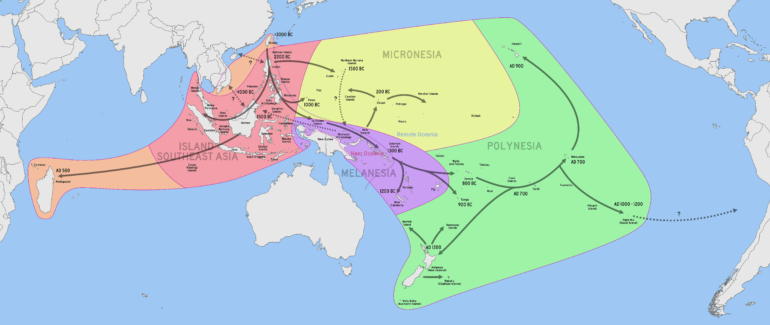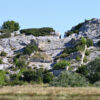Prehistoric Polynesian seafarers were highly skilled and undertook some of the longest and most technically demanding voyages in prehistory—but did they ever sail into very high latitudes with landfall in Antarctica, as some scholars have argued?
An international team of archaeologists and paleoecologists seeking an answer to this question sifted through material evidence for prehistoric (i.e., preEuropean-era) voyaging from archaeological middens (rubbish heaps) in the remote subantarctic region of the southwest Pacific. Their work focused on an archaeological site at Sandy Bay on Enderby Island, about 500 km south of Stewart Island.
The team included Professor Atholl Anderson from the Ngāi Tahu Research Center at the University of Canterbury, who is also an expert on Polynesian boatbuilding, and Dr. Janet Wilmshurst from Manaaki Whenua—Landcare Research. Their study is published in the journal Archaeology in Oceania.
Enderby Island is the northern-most island of the Auckland Islands group, and at 51°S is the southernmost prehistoric landfall known, despite extensive searches for prehistoric sites at other islands further south, closer to Antarctica.
The Sandy Bay site, where eroding dunes have revealed thin occupational layers containing Polynesian middens and ovens, was first discovered and archaeologically explored by Atholl Anderson and Gerard O’Regan and radiocarbon dated in 1998, with further investigations in 2003. They provided the first clear evidence of pre-European Polynesian occupation at Sandy Bay.
The new team of researchers re-excavated the site in 2020, by which time further erosion at the site had revealed additional bone and charcoal material to radiocarbon date, enabling them to construct a more accurate timeline than was previously possible. The researchers then used Bayesian statistical analysis of all the available radiocarbon dates to model the likely start and end dates of the prehistoric human occupation.
Dr. Wilmshurst says “The combined results show that the Sandy Bay site was most probably first occupied about AD 1250–1320, consistent with known ages for the same colonizing event in New Zealand and other remote islands of East Polynesia.”
The dated materials from Sandy Bay show that occupation continued—perhaps sporadically—for about 100 years. A factor in support of sporadic occupation is evidence from pollen analysis of cores meters away from the Sandy Bay middens and other areas on the main Auckland and Campbell Islands further south, which showed no prehistoric human impacts on the island’s vegetation.
Global cooling associated with the Little Ice Age may well then have forced a retreat to Stewart Island (47°S), after which the Auckland Islands were not reoccupied until their European re-discovery in 1806.
In answer to earlier assertions that prehistoric voyagers then reached Antarctica and perhaps made landfall, the researchers discuss the many physical and practical constraints to such an achievement, including human body heat loss and necessary calorie intake, available contemporary clothing, boat and sail technology, absence of suitable wood or fiber to make boat repairs and—perhaps most importantly, a further 2000 km of cold, high-breaking oceanic waters and sea ice to traverse south of Sandy Bay before an Antarctic landfall could have been made. Even with modern technology, the Southern Ocean is difficult to navigate safely.
Recognizing that debate about the traditional southern limits of Polynesian seafaring is likely to continue, Prof. Anderson says “The dating results from Sandy Bay now make Enderby Island the southernmost known viable site for prehistoric Polynesian habitation. Although Polynesian exploration into high latitudes is a remarkable achievement in terms of seafaring skill and ambition, radiocarbon dating material evidence of their visits indicates they reached a southern boundary about 2,000 kilometers short of Antarctica.
“This research reveals the adaptability and resilience of early Polynesian navigators in this remote and harsh sector of the South Pacific Ocean, as well as the significant limitations to successful return travel that would have arisen if ventures any further south had occurred.”
More information:
Atholl Anderson et al, The age and position of the southern boundary of prehistoric Polynesian dispersal, Archaeology in Oceania (2024). DOI: 10.1002/arco.5337
Provided by
Manaaki Whenua – Landcare Research
Citation:
How far south did Polynesian seafarers sail? (2024, October 29)



